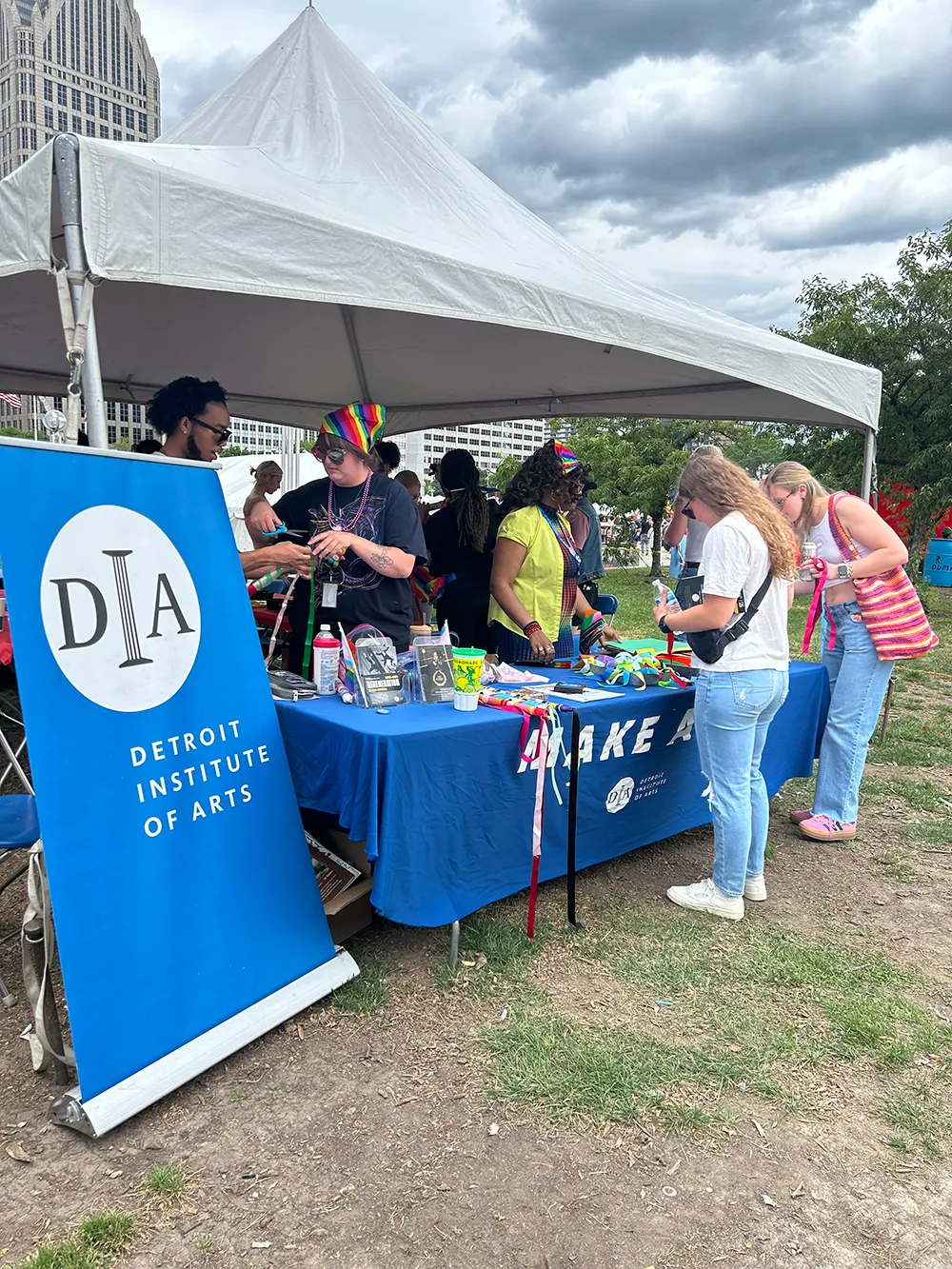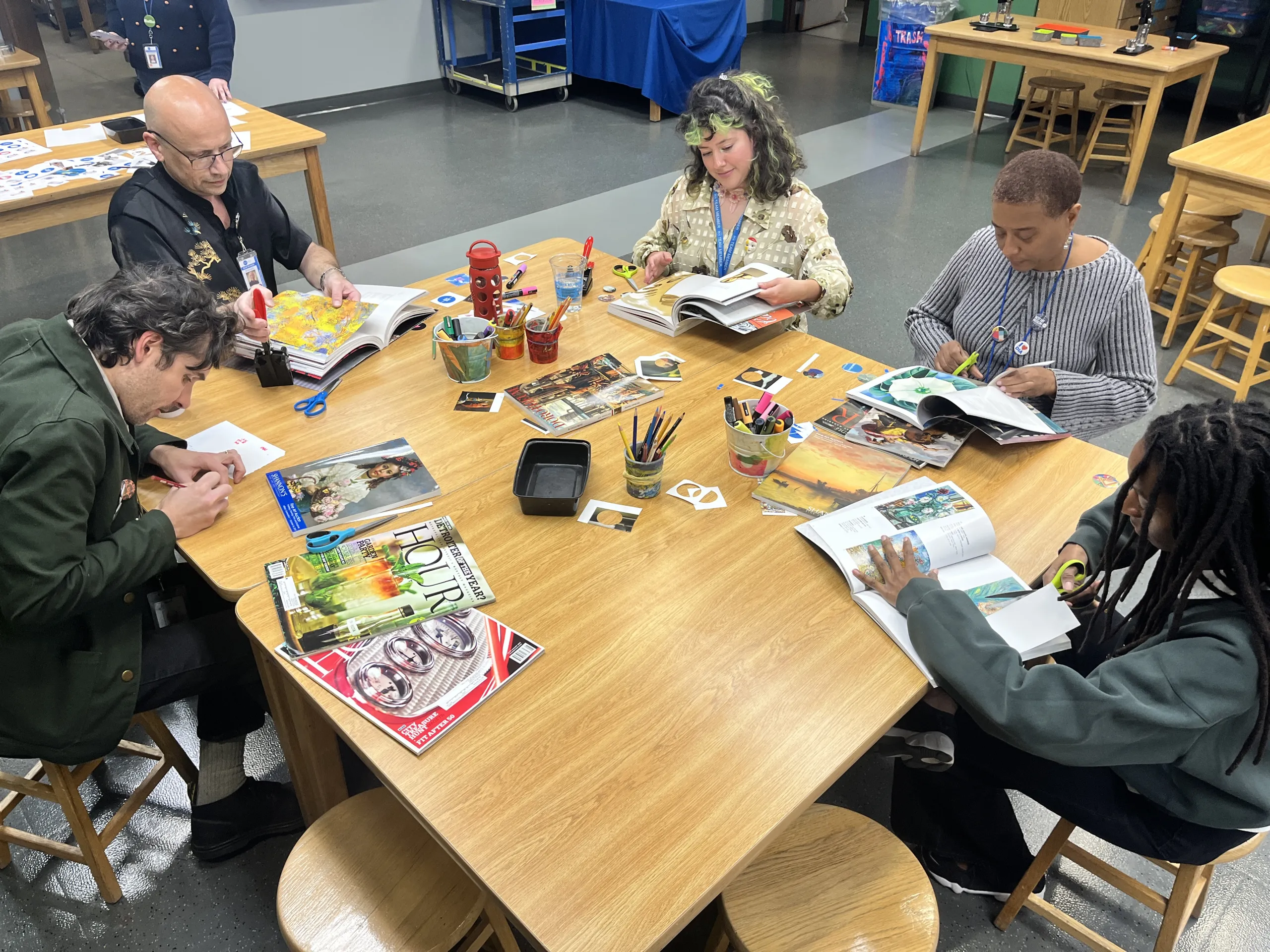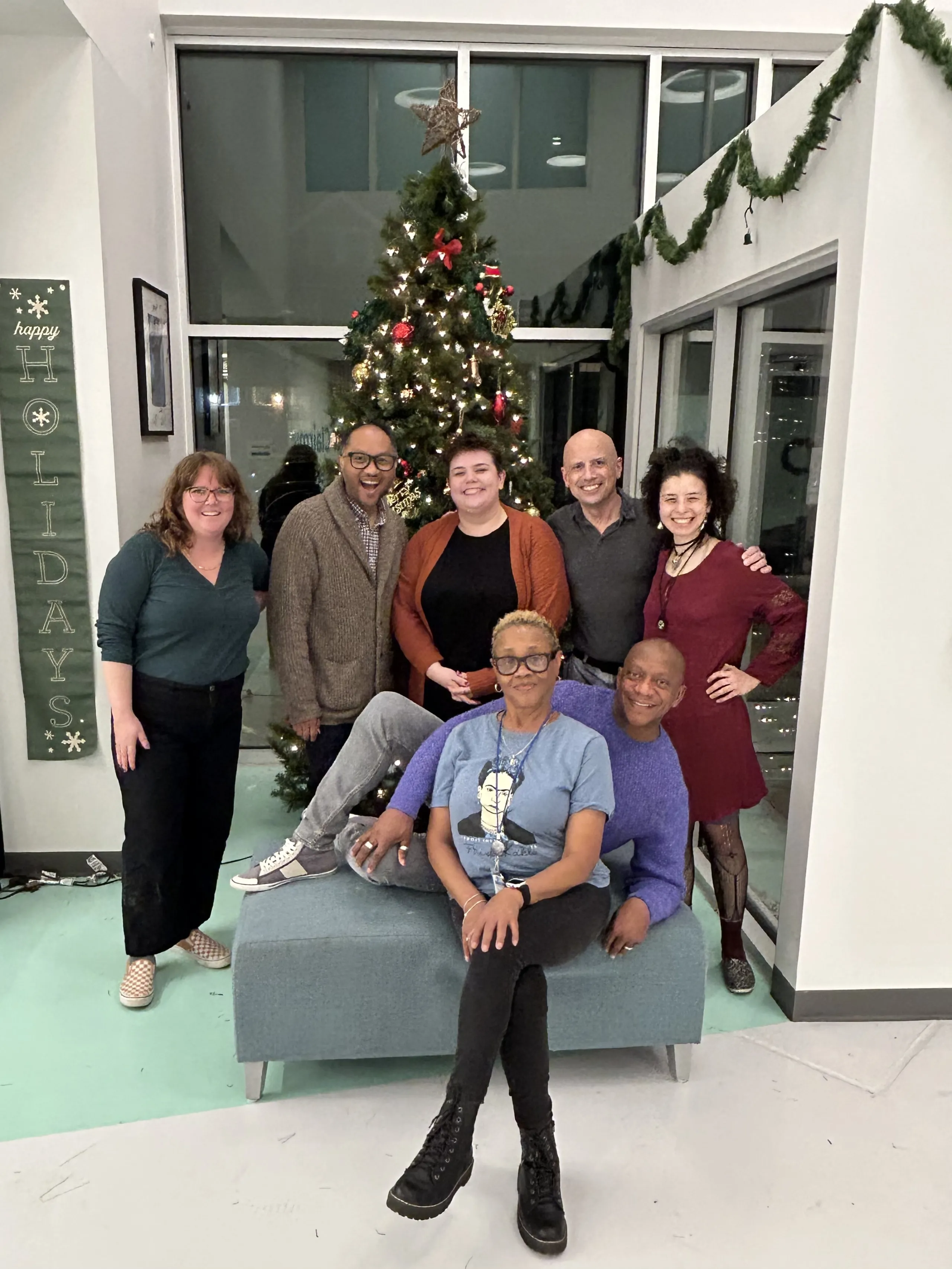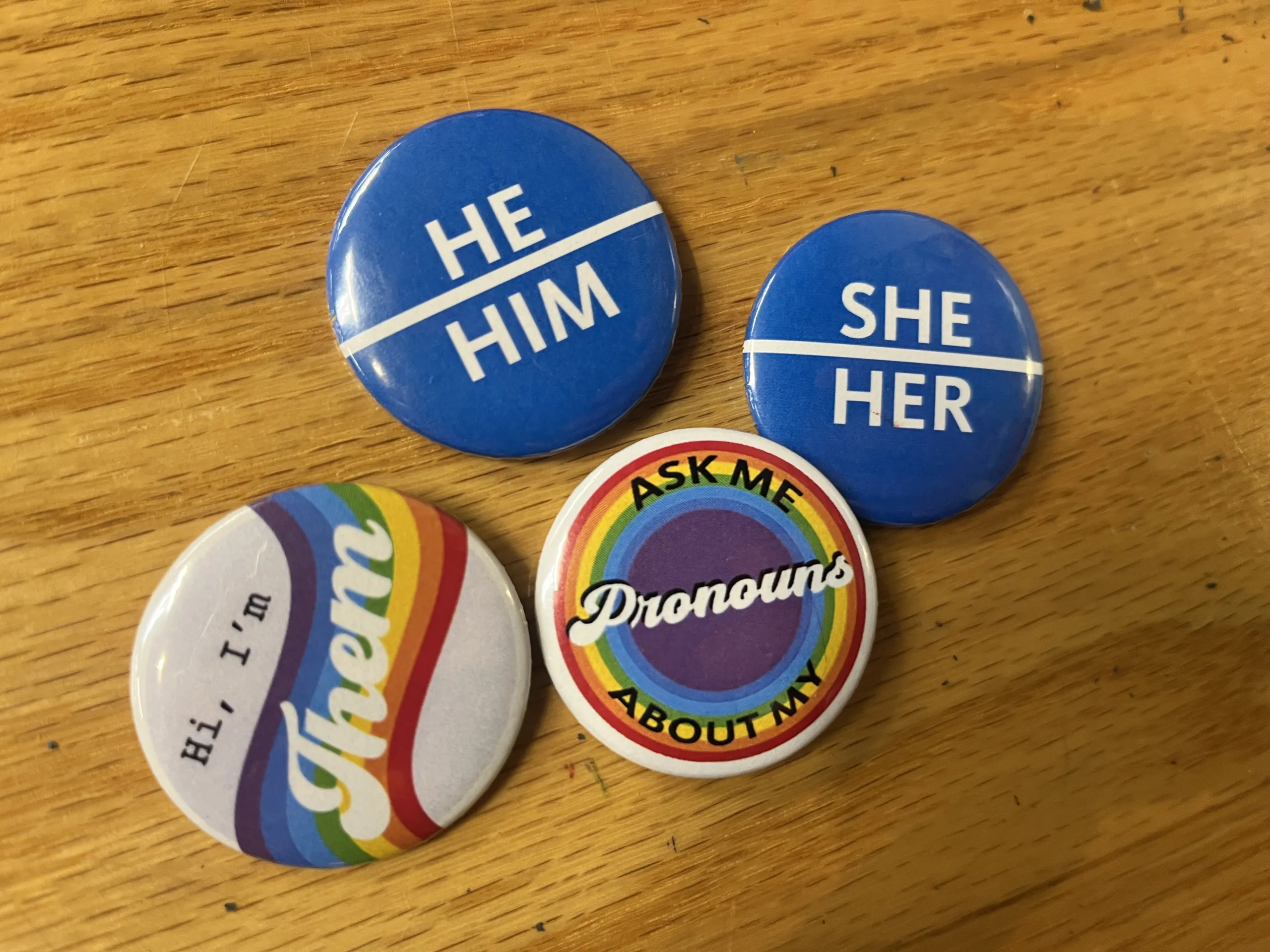A year ago, DIA team members created PRISM, an Employee Belonging Group centered around LGBTQ+ identity and allyship, with a goal of increasing a sense of belonging for museum team members, as well as building stronger connections between the DIA and the local LGBTQ+ community. PRISM’s creation "came out of a larger commitment at the DIA around IDEA: inclusion, diversity, equity and access,” explains Colleen McNamara, Production Coordinator, Exhibitions, and current Chair of PRISM. Carla Tinsley-Smith, the DIA’s Director, IDEA, "put out a call for requests for different types of groups. There were a lot for one that centered on LGBTQ+ identity,” says McNamara. She, along with Sean Rhaesa, Manager, Technical Security Operations, and Miranda Malec, Registration Assistant, volunteered to lead (Malec and Rhaesa are PRISM’s Vice Chairs). “We were just so excited. We’re sort of the flagship for this opportunity,” says Rhaesa.
McNamara, Rhaesa, and Malec took the DIA’s staff engagement survey as a model and developed a version that asked DIA team members to rate their sense of belonging and identity. “The idea was to have solid metrics around something that feels intangible, so we could show the group’s impact,” says McNamara. “People said that just the creation of the group had made a difference in their sense of belonging.”
Members of DIA’s PRISM group participated in the Motor City Pride parade on June 9, helping generate awareness of and attendance at other DIA Pride Month activities, including a make-your-own multicolor ribbon baton at the museum’s booth. “It’s an all-ages craft activity,” says Rhaesa. “The crafts projects at Pride tend to be for kids, but this is something fun for adults too, and they can take the batons to the parade.”


DIA team member Phil Rivera waves a rythmic ribbon baton in front of the artmaking tent at Motor City Pride

PRISM has been working to support and encourage turnout at other Pride events happening at the museum this month. Going forward, PRISM hopes to develop more of its own events.
The more than 60 DIA team members who are part of PRISM have had the opportunity to participate in multiple volunteer activities, including holiday decorating at the Ruth Ellis Center, which provides services and support for LGBT youth in the Detroit area. They’ve hosted multiple events for DIA staff and PRISM members, including a talk with artist Tylonn Sawyer exploring the intersection of American history, politics, and pop culture through a Black, queer lens; a button-making workshop in the DIA’s Artmaking Studio; and a visit to Cranbrook Art Museum exhibitions Skilled Labor and LeRoy Foster.

PRISM staff at an artmaking activity in the DIA Studio

PRISM Leadership and Programming committee pose at the Ruth Ellis Center after holiday decorating.

The basis of much of their work centers on education and growth.
“A lot of our work has been focused on training and education inside the DIA,” McNamara adds. “A big part of it is a broader understanding of, and education among, staff members about how they can support their colleagues. A lot of that work has been done around pronouns and gender identity and providing more training for staff on how you can be supportive as an ally, so the work is not all falling on the individual.”
“PRISM is now included in the orientation packet that new hires get. So now, when people start, they find out about us right away,” says Rhaesa. “When you walk into a place that says we have an open and inclusive environment, and you also see materials that say we have an LGBTQ+ group, you don’t feel so alone.”
Aside from hosting events and internal trainings, another important goal for PRISM is to ensure that LGBTQ+ team members and visitors see themselves reflected in the museum’s collection and programming.
“Representation came up in the survey a lot,” says McNamara. “Folks mentioned they didn’t necessarily feel their identity was represented in the museum’s galleries, or events. We all know there have been plenty of queer artists, but that’s an area we’re excited to work on with other departments, to highlight the art in our collection that is by queer artists, or feature themes related to LGBTQ+ identity. That would make employees feel represented and affect the way visitors interact with our collection.”
